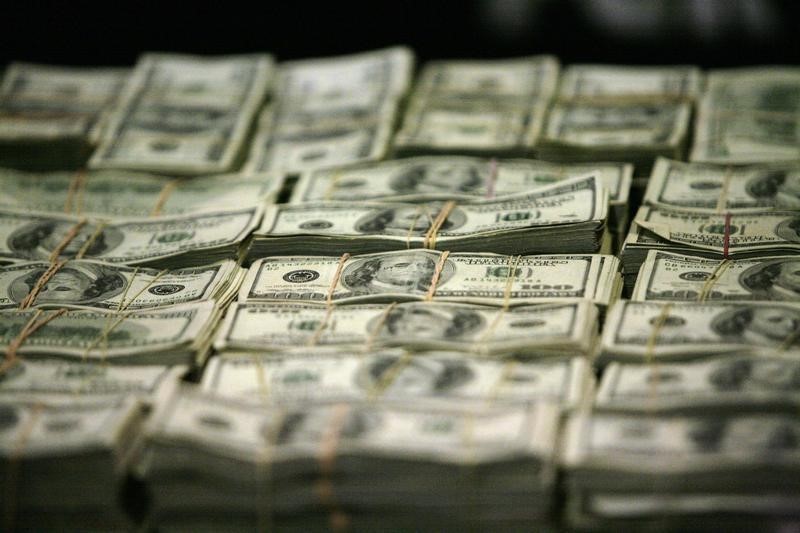Oil prices push higher amid worries over Russian supply disruptions
Investing.com - The U.S. dollar edged higher Thursday, buoyed by safe-haven demand as the Middle East conflict threatens to escalate in the wake of the latest Federal Reserve policy meeting.
At 04:25 ET (08:25 GMT), the Dollar Index, which tracks the greenback against a basket of six other currencies, rose 0.1% to 98.585, on course for a 0.9% gain for the week, its strongest weekly performance since late January.
Dollar helped by safe haven status
Israel and Iran exchanged fresh air bombardments on Thursday, as speculation mounts that President Donald Trump is set to bring the U.S. into the conflict between the two countries, which is now entering its seventh day of fighting.
Trump told reporters on Wednesday that "nobody knows what I’m going to do" about the U.S. possibly entering the conflict. He suggested that Iranian officials wanted to come to Washington for negotiations, but flagged that "it’s a little late" for these talks.
“The combination of geopolitical risks and high oil prices is not US-induced risks, and therefore the dollar is still in a more favourable spot than the energy-dependent safe-haven alternatives (like the euro) in this environment,” said analysts at ING, in a note.
“Upside risks for USD persist.”
The Federal Reserve held rates steady on Wednesday, as expected, but Chair Jerome Powell also warned of inflation risks, saying the price of goods will pick up over the course of the summer as Trump’s tariffs start to impact consumers.
“And while keeping two rate cuts in the 2025 median projection may seem moderately dovish, the Fed sounded less concerned about growth and unemployment,” ING added.
Euro heads for weekly decline
In Europe, EUR/USD fell 0.2% to 1.1465, with the single currency hitting a one-week low earlier in the session, and was heading for its biggest weekly decline since February.
The euro has seen selling on the back of the heightened geopolitical tensions.
“Our view is that EUR/USD can probably correct a bit further from here on geopolitical risks. Our near-term target is 1.140, and explorations below that level can be justified even without new big spikes in oil prices,” said ING.
“That said, geopolitical events tend to be temporary drivers for FX unless they trigger long-lasting effects on commodity prices (like the Russia-Ukraine war). So, we still think there will be plenty of interest in buying the EUR/USD dips at the first signs of de-escalation.”
GBP/USD dropped 0.1% to 1.3410, ahead of a Bank of England policy meeting later in the session.
The BoE is widely expected to keep rates on hold having lowered rates by a quarter point to 4.25% in early May, and thus investors will be waiting to see how policymakers voted and for any guidance on the rate cut trajectory.
“There could be more than one dissenter voting for a cut, but the overall guidance should remain broadly unchanged, roughly endorsing market expectations for two more cuts by year-end,” ING added.
USD/CHF rose 0.1% to 0.8185 after the Swiss National Bank cut interest rates by 25 basis points to 0%, creating the future possibility of a return to negative rates.
“Inflationary pressure has decreased compared to the previous quarter. With today’s easing of monetary policy, the SNB is countering the lower inflationary pressure,” the central bank said in a statement.
PBOC meeting due
In Asia, USD/JPY traded 0.1% higher to 145.31, with the Japanese yen seeing limited safe haven demand, while USD/CNY was largely unchanged at 7.1912, ahead of a meeting of the People’s Bank of China later in the week.
AUD/USD fell 0.6% to 0.6473, with the Australian dollar after data showed an unexpected deterioration in the country’s labor market in May.
